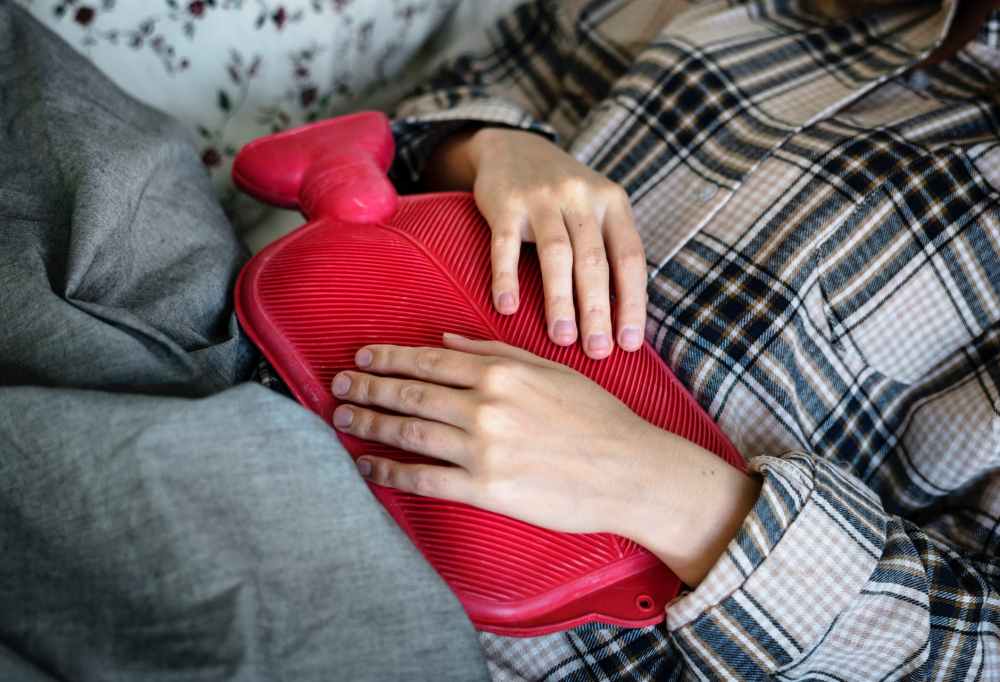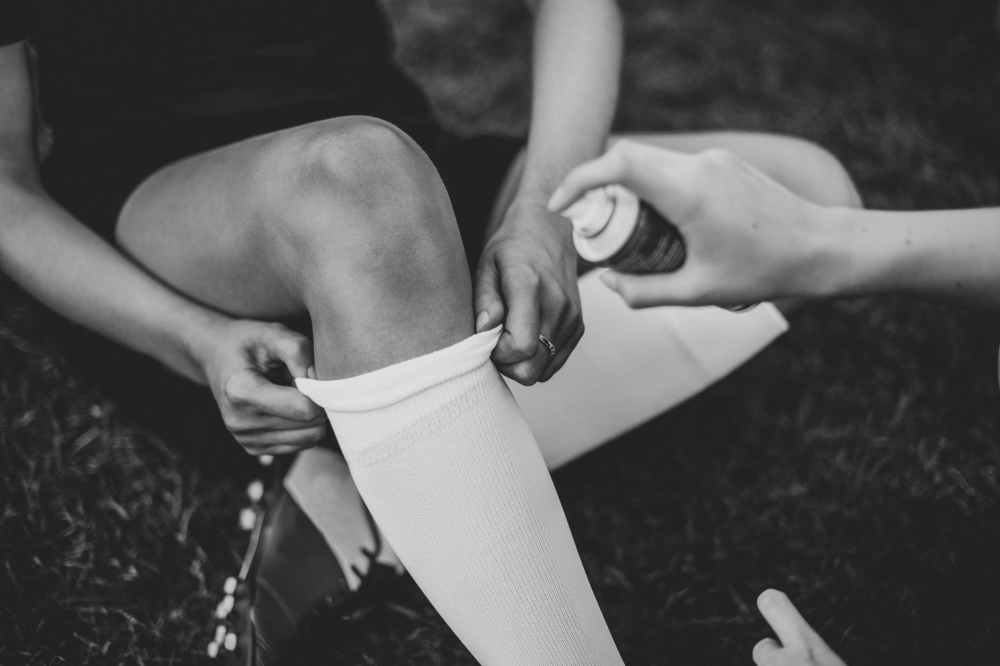Monday, 29 June 2020
What is Endometriosis?
This is a disorder in women in which tissues that normally lines the uterus called the endometrium grow outside the uterus on the ovaries, fallopian tubes, and the tissue lining the pelvis.
Sign and symptoms of endometriosis
- Painful periods: This severe pain may begin before and well into the period
- Abnormal periods: This may be heavy bleeding during periods, irregular periods, or spotting.
- Pain during sexual intercourse in the back, lower abdomen, pelvis, rectum, or vagina
- Adhesions i.e. tissues binding the pelvic organ together
- Pain with bowel movement or urination
- Infertility
- Fatigue and tenderness
- The severity of the symptoms doesn’t indicate the degree or stage of the condition. Some may have a mild form of the disease and experience agonizing pain while some people may have a severe form and experience little or no symptoms.

Diagnosis of endometriosis
The symptoms of endometriosis can be similar to symptoms of other conditions like ovarian cysts and pelvic inflammatory disease. Your doctor will do one or more of the following.
- Take a detailed history of your symptoms and family history of endometriosis.
- Physical examination
- Your doctor may use a transvaginal or abdominal ultrasound to produce images of your organs to identify cysts associated with endometriosis.
- Laparoscopy: A minor surgery is done to view the lesions and remove them at the same time.
Stages of endometriosis
There are four stages of this condition
Stage 1: Minimal
Small lesions, shallow endometrial implants on the ovary
Stage 2: Mild
Light lesions and shallow implants on the ovary and pelvic lining.
Stage 3: Moderate
Deep implants on the ovary and pelvic lining.
Stage 4: Severe
Deep implants on the pelvic lining and ovaries. Lesions on the Fallopian tubes and the bowel
Treatment of endometriosis
Endometriosis has no cure but its symptoms can be managed. Treatment options include:
Pain medication
Hormonal therapy
This helps to reduce pain, regulate the hormonal changes that promote tissue growth occurring during endometriosis. These hormonal treatments include:
- Hormonal contraceptives like birth control pills, patches, and vaginal rings can reduce or eliminate pain in severe endometriosis. They work by preventing the monthly build-up of the endometrial tissue.
- Gonadotropin-Releasing Hormone(GnRH) agonists and antagonists – These block production of estrogen which is responsible for the development of female sexual characteristics. Blocking estrogen prevents menstruation and leads to artificial menopause.
Conservative Surgery
This is done to remove abnormal endometrial growths without damaging the reproductive organs.
Hysterectomy
This is a rather radical treatment and you should seek a second opinion before agreeing to this especially if you want to have children.
Do you suspect your symptoms may indicate endometriosis? Consult your doctor as soon as possible for proper diagnosis and management.
Endometriosis: Symptoms, treatment, diagnosis. (n.d.).
obgyn.ucla.edu/endometriosis
Facts about endometriosis. (n.d.).
endometriosis.org/resources/articles/facts-about-endometriosis/
Endometriosis. (2019).
womenshealth.gov/a-z-topics/endometriosis
There are a lot of good reasons to go for a walk. It’s fun, it’s relaxing and most important it’s good for your health. But what exactly are the health benefits of walking?
Walking Gets You Outside In The Fresh Air and Sunshine
No matter how fast or slow you walk, walking gets you outside and in the fresh air. This alone will make you feel better as your body absorbs oxygen and sunshine. Both are important for your health and well-being.
You will find the air quality outside will be much better than the air inside your house. Of course, the sunshine outside will help your body produce all the Vitamin D it needs.

Walking Can Help You Get To And Maintain A Healthy Weight
Walking particularly at a quick pace and doing it regularly can help you get to and then maintain a healthy weight. Yes, you still need to watch what you eat and aim for a healthy diet, but walking can be another tool to help you drop the extra weight.
The nice thing about walking when you’re overweight is that you burn a lot of calories, even on short and slow walks. As you start to lose weight, your overall strength and endurance increases, allowing you to walk longer, further, and faster.
Walking Improves Your Sense Of Balance And Coordination
As you walk, particularly when walking over rougher terrain, you’re also working on your sense of balance and coordination. Just getting in the habit of going for a daily walk will help. But you can work even more on your sense of balance by moving your head around. Turn your head to the right and left as you walk for a count of 30. Then move your head up and down for a count of 30. Doing these simple exercises once or twice as you walk each day will be of great benefit.
Walking Strengthens Your Bones and Muscles
Even though walking is a low-impact form of exercise, it helps to strengthen and tone your body. If you’re just starting out, it is all you need to start to get into better shape. As you get more fit, consider adding weight lifting exercises in addition to your daily walks to continue to get stronger and help develop strong muscles and bones.
Walking Will Boost Your Mood and Fight Depression
The exercise of walking releases endorphins that will help lift your mood and can even reduce depression. Give it a try. The next time you’re feeling tired or are in a bad mood, lace up your sneakers and go for a brisk walk. It works!
When you are young, it is easy to forget how important your joints are for your overall quality of life. Your joints are what allow your skeleton to bend, as your joints are located where at least two bones meet one another. This bending is what allows you to perform everyday tasks. Without joints, you would be one cohesive group of bones, unable to participate in your environment.
Joints also consist of cartilage that lines each end of the bones. Cartilage is important in cushioning the bones in your joints. This cartilage can break down, as is the case in the development of osteoarthritis (which you may hear referred to as “wear and tear” arthritis).
Unfortunately, it is easy to neglect your joints, but you may pay the price as you age. That is why it is important to start looking after your joints at an early age so that they will be there to support and serve you for years to come.

Here are some helpful tips to keep your joints healthy:
Protect your joints
Some activities are harder on your joints than others or pose a greater risk of injury. For example, sparring in martial arts puts your joints at risk of injuries. Repeated jogging on pavement also increases the risk of damage to your joints and cartilage.
It is therefore wise to choose low-impact exercises such as swimming, walking, or cycling. However, if you will be participating in higher-risk activities, be aware of the potential for damage to occur to your joints, and do your best to protect your joints. You can do this by wearing protective gear such as elbow pads, knee pads, or knee braces.
In addition, be sure to use your larger joints such as your elbows and shoulders to carry your purse, instead of your smaller hand joints.
If you are injured, be sure to stop the activity and seek treatment in order that you can prevent further damage to your joints.
Lose weight
Excess weight is especially detrimental to your weight-bearing joints in your legs (knees, hips, ankles). This can become a vicious cycle if not dealt with. In other words, you gain weight, your joints are sore, and so you exercise less. You may need to consult a healthcare professional or a personal trainer to provide you with specific methods to get back on the road to health in all areas.
Do strength-training
When you strengthen the muscles around your joints, these muscles help support your joints resulting in less stress placed on the latter.
If you strengthen your quadriceps and hamstrings muscles found in the front and back of your thighs respectively, you are providing more support for your knee joints. This reduces the risk of developing osteoarthritis in your knees.
You also want to strengthen your abdominal muscles. When you have stronger abdominals, your balance also improves. This can help you prevent damage to joints, as your chances for falls decrease as your balance improves.
Watch what you eat
Some foods promote inflammation throughout the body, including the joints. Omega 3’s, however, are good for you, as they are known to reduce inflammation. The best sources of Omega 3’s are found in cold-water fish such as salmon. You can also take Omega 3’s in supplement form. Be careful not to add extra Omega 6’s into your diet, as the North American diet gets enough of these already, and they have been reported to increase inflammation.
Take supplements for healthy joints
Glucosamine and chondroitin are two products that naturally make up cartilage in your body. You can purchase glucosamine and chondroitin in supplement form. Some people swear by these products, and use them to keep their joints healthy.
Lose weight
Excess weight is especially detrimental to the weight-bearing joints in your legs (knees, hips, ankles). This can become a vicious cycle if not dealt with. In other words, you gain weight, your joints are sore, and so you exercise less. You may need to consult a healthcare professional or a personal trainer to provide you with specific methods to get back on the road to health in all areas.
Do strength-training
When you strengthen the muscles around your joints, these muscles help support your joints resulting in less stress placed on the latter.
If you strengthen your quadriceps and hamstrings muscles found in the front and back of your thighs respectively, you are providing more support for your knee joints. This reduces the risk of developing osteoarthritis in your knees.
You also want to strengthen your abdominal muscles. When you have stronger abdominals, your balance also improves. This can help you prevent damage to joints, as your chances for falls decrease as your balance improves.
Watch what you eat
Some foods promote inflammation throughout the body, including the joints. Omega 3’s, however, are good for you, as they are known to reduce inflammation. The best sources of Omega 3’s are found in cold-water fish such as salmon. You can also take Omega 3’s in supplement form.






